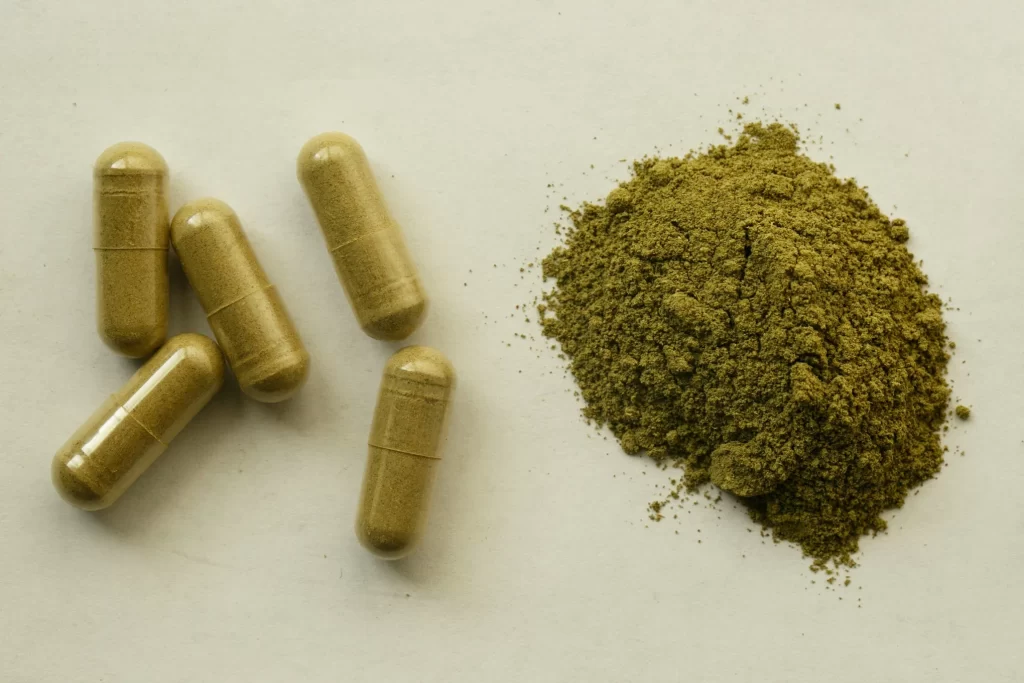How long does kratom powder last when stored correctly?

Southeast Asian trees Mitragyna speciosa produce Kratom powder. Mitragynine and 7-hydroxy mitragynine are alkaloids that act as stimulants and sedatives.
Like many botanical products, kratom powder is sensitive to heat, light, oxygen, and moisture. Exposure compromises the alkaloid content and aromatic quality quicker than if shielded from these elements. Storing kratom powder in a cool, dry, dark place away from direct light optimally preserves the active compounds. Recommended conditions are between 55-70°F, kept dry in an airtight container out of sunlight. Freezing is not necessary and could damage cell walls through ice crystal formation.
The cool end of the range helps prevent moisture accumulation that activates mold growth. Darkness prevents the breakdown of alkaloid molecules from light exposure. An airtight container maintains a steady environment by preventing airflow and humidity changes. With proper conditions, kratom stays fresh and usable beyond its average shelf life. Powder within airtight bags or jars lasts over a year before noticing a serious drop in potency if the storage area remains climate-controlled. On the contrary, heat and humidity shorten shelf life to just a few months.
The refrigerator offers cool, dark storage that works for the short term between 1-3 months. Freezer temperatures below freezing are unnecessary and could damage kratom powder through cellular rupturing. The ideal refrigerator range is 34-40 °F. Within this cooler setting, kratom powders stay protected from heat, oxidation, and mold growth. The closed environment also prevents moisture accumulation. Glass jars or airtight plastic bags are suitable containers, enabling stable conditions.
However, long-term refrigeration has disadvantages in maintaining quality. The temperature fluctuations from repeated openings and closings of the refrigerator introduce warmer, moister air. This cyclic thawing also activates more oxidation each time metals in the powder bind with oxygen. Over many months, even refrigeration allows gradual potency loss. So while the refrigerator preserves kratom for short durations, room temperature storage works better beyond 3 months.
What are signs of deterioration?
Determining the actual expiration of kratom powder comes down to visible, aromatic, and bioactive indications. Storage conditions control the deterioration rate, but there are telltale signs regardless of storage time.
- Color Change – Kratom leaves are naturally green with some red or white veins. Quality kratom powder retains this greenish hue and lighten slightly over time. Deteriorated kratom darkens, turning brown, red, purple, grey, or nearly black. This color shift indicates oxidation and breakdown of the main active alkaloid, mitragynine.
- Aromatic Differences – Fresh kratom powder emits a bitter, grassy smell, often compared to crushed leaves or matcha powder. This distinct aroma dissipates with age as volatile compounds evaporate into the air. Old kratom smells flat, almost indistinguishable from any green botanical powder.
- Potency Loss – Even if it smells and appears fine, degraded kratom delivers weakened effects. Fresh powder causes classic results – stimulant at low doses, sedative at high. With older kratom, the dose must keep increasing to match the original strength. Once there is no effect even at very high doses, the powder has lost potency.
Under proper storage, kratom powder avoids these aging side effects for over a year. With ideal conditions, experienced consumers report potency and aroma holding up for around 15 months. After that threshold, the effects and smell decline noticeably within a couple of months.








